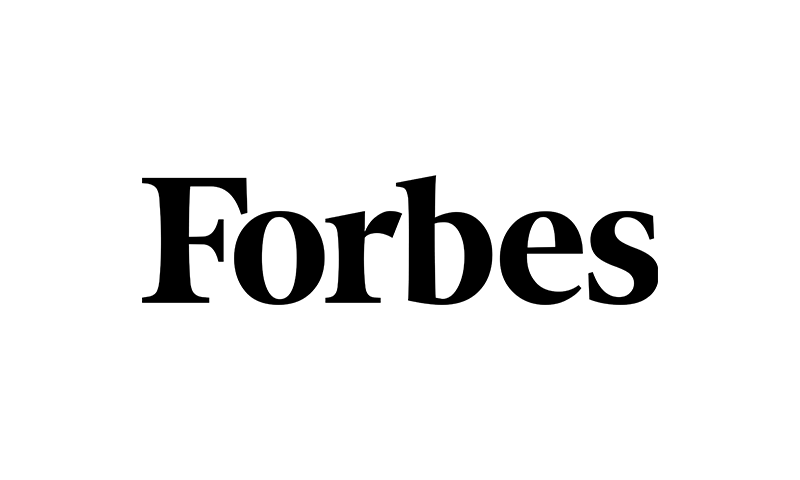Originally posted on MobiHealthNews, by Jack Kaufman.
It’s no secret that the price of prescription drugs has grown at a swift pace over the past several decades. For example, a 2018 report from the office of U.S. Senator Claire McCaskill determined that the average price of the 20 most-prescribed brand-name drugs for seniors increased at 10 times the rate of inflation between 2012 and 2017. In other words, the average compounded annual price increase for each of these drugs was 12 percent over this five-year period.
Higher drug prices can quickly add up: one report estimated that prescription drug spending in the United States reached $535 billion in 2018, up from $506 billion in 2017. These figures account for the high financial cost of rising drug prices but fail to consider the human cost of this problem.
Results from a survey conducted by Consumer Reports showed that 14 percent of US residents didn’t fill a prescription after learning that their out-of-pocket costs increased year-over-year. Another survey showed that 45 percent of diabetes patients have missed taking doses of insulin because of the drug’s high prices.
Problems related to the rapid surge in drug prices have gotten so dire, that the president, Congress, health systems, and even a retired hedge fund billionaire have made solving them a top priority.
In addition to these efforts, more and more startups have made it their mission to improve access to prescription drugs by making them more affordable.
This article will look at how both established startups with tens of millions of dollars in funding and nascent companies are finding ways to lower the consumer-facing prices of prescription medications.
Price transparency and medication coupons
With the proliferation in high deductible health plans — CDC data indicate that 43.2 percent of US citizens under age 65 were on high deductible plans in 2017—consumers have to be careful about the prices they pay for medications.
Why? Even though most high deductible plans work with pharmacy benefit managers to negotiate lower prices for their members, they don’t start to cover these costs until patients reach their deductible. For patients on high deductible plans that haven’t reached their deductible, the cost of generic or expensive brand-name medications can be unaffordable.
One group that’s even more vulnerable than the tens of millions of United States residents who have high deductible health plans is the more than 27 million people in the United States with no insurance at all. People without insurance can’t afford most prescription drugs as they have to pay the cash price at the pharmacy.
Over the last five to ten years, entrepreneurs have begun to figure out ways to increase price transparency and to give customers coupons that help them lower their medication costs. Here are a few of the companies focused on this space:
- GoodRx is the largest player in this sector with a reported valuation of $2.8 billion. The company partners with pharmacy benefit managers to offer discounts on generic drugs to people with high deductible plans and people who don’t have insurance. GoodRx users can see the price they’d pay for a particular medication with a GoodRx coupon, and then compare that information to the price offered through their insurance. In many cases, GoodRx is able to offer its users better generic drug prices than their insurance plans. The company makes money through a transaction fee on each sale it generates and through its premium offering called GoodRx Gold.
- Blink Health is another major company in this space with more than $165 million in funding. The company allows patients to purchase low-priced generic medications online and then offers free home delivery or free local pickup at Walmart, Albertsons, Safeway, and Kroger pharmacies. Blink Health also has a “Price Match Guarantee,” where if a consumer uses it to buy medication and finds that another pharmacy or discount site offers a lower price, they’ll refund the difference. For consumers with high deductible plans, Blink is another good option for purchasing medications.
- Hoy Health offers two different products that aim to reduce generic drug prices and allow people to help their loved ones get the medications they need. The first product, HoyMEDS, is a discount prescription savings card that most pharmacies in the US and Puerto Rico accept. Users can go online to compare the prices of generic medications at different pharmacies where they live; the HoyMEDS savings card allows users to pay those prices at the store. HoyRX allows people in the US, Puerto Rico, Mexico, Honduras, El Salvador, and Guatemala to purchase vouchers online that they or their loved ones in these countries can use with a valid prescription to receive their medications. This service means that people can directly purchase their family members’ medicines, even if they live abroad, without having to pay high remittance fees.
- RxRevu focuses on improving medication price transparency at the point of care. The startup’s SwiftRx product integrates with the EHR and provides prescribing physicians with cost, formulary, and benefits data for each patient they see. SwiftRx also makes it easy for physicians to see if a particular drug has lower-cost alternatives with a clinically equivalent therapeutic effect. With SwiftRx, doctors can make informed prescribing decisions with patients’ physical, mental, and financial well-being in mind.
Helping more people pay for brand-name drugs
While products like GoodRx and Blink Health help uninsured people, underinsured people, and people with high deductibles save money on generic drugs, they can’t save people money on brand-name drugs that are still under patent protection.
Why? Because as long as a brand-name drug has patent protection, the company that invented it has the exclusive right to manufacture it. Until the patent expires, lower-cost, generic versions of the drug can’t enter the market and create price competition. As a result, brand-name drugs, especially ones that are used to treat rare, orphan, or chronic diseases, end up being very expensive.
How expensive? A list of the ten most expensive popular brand-name drugs includes Humira (cash price of $7,719 for a one-month supply), NovoLog (cash price of $633 for a one-month supply), and Advair (cash price of $588 for a one-month supply).
For someone without insurance or for people on high deductible plans, these life-saving brand-name medications are often unaffordable. In the end, many people skip doses or don’t fill their prescriptions if they believe they can’t afford the cash price, or even the copay, after reaching their deductible. Truven Health surveyed 3,003 people about their prescription drug usage in June 2017. Of the people who responded to the survey to say they hadn’t filled or picked up a prescription, 66.5 percent said cost was the primary reason.
When researching this problem, I came across one startup that’s working to help people afford their brand-name medications. Here’s a look at what they do:
- Penguin Pay offers zero percent interest loans to patients who need costly medications. Patients can go to Penguin Pay, enter the name of the medication they need, and choose to pay for it over a four-, eight-, or 12-week term. The company then performs a credit check to determine if patients are eligible for financing. Once approved, patients can pick up their medication with a Penguin Pay card and repay the cost of the drug over the time period they chose. Penguin Pay doesn’t actually reduce the cost of brand-name drugs. But, by giving people the opportunity to pay for expensive medications in smaller weekly increments, the company bets that more people will be able to fill these prescriptions.
- CareCredit, while not technically a startup, is a major company in this space. It offers zero percent APR financing over six-, 12-, 18-, and 24-month periods on prescription drug and over-the-counter medication purchases that are greater than $200. The company’s financing options are also available for other healthcare costs that exceed $200. CareCredit users only pay interest on their medical bills if they miss their minimum monthly payments or don’t repay what they owe by the due date. Walmart and Rite Aid pharmacies accept CareCredit on qualifying purchases.
Improving medication prices and access for seniors
For seniors who live on fixed incomes, prescription medications are often unaffordable or quite expensive. For instance, in 2015 more than 1 million seniors reached what’s called the “catastrophic phase” of coverage. Right now, this phase kicks in after seniors reach $5,100 in out-of-pocket drug spending. Once a senior reaches this threshold, they have to pay up to a 5 percent copay on the price of the prescriptions they receive. While a 5 percent copay isn’t significant for seniors who take low-cost medications, for seniors who need brand-name drugs to treat conditions like cancer, multiple sclerosis, and hepatitis C, these copays can add thousands of dollars in out-of-pocket expenses.
Other research published in 2017 showed that 16.8 percent of the 1,593 seniors surveyed had skipped medication doses or not filled prescriptions due to high drug costs. These results indicate that too many older Americans struggle to pay for their medications.
While federal programs like Medicare Extra Help and state-based assistance programs can help seniors with fixed incomes defray some medication costs, these programs often aren’t enough. That’s why several startups have popped up in this space. Here’s a look at the companies that are improving medication access and affordability for seniors:
- Zipdrug partners with health plans to lower their members’ drug costs. The company works with a wide group of pharmacies to find the lowest drug prices for Zipdrug members. These pharmacies fill prescriptions and offer same-day delivery to the service’s users. Thanks to Zipdrug, Medicare beneficiaries can avoid the hassle of going to the pharmacy and see meaningful savings on their copays.
- Trusty.care offers simple Medicare navigation services to seniors. Medicare beneficiaries visit Trusty.care and tell the product which medications they take and the average frequency with which they see the doctor. The company uses this information to recommend the Medicare Advantage plan that will have the lowest monthly premiums and prescription drug copays.
Companies that are actually manufacturing or distributing lower-cost drugs
While solutions like GoodRx, Zipdrug, Hoy Health, and Penguin Pay make medications more affordable, they don’t change the fact that the list prices of many drugs are too high. For instance, a Reuters analysis determined that the prices of the “world’s 20 top-selling medications” are three times higher in the US than they are in Britain.
Several startups and nonprofits are working to actually manufacture and sell pharmaceuticals at much lower prices. Here are the most interesting companies in this space:
- Civica Rx is a nonprofit pharmaceutical company that partners with hospitals and health systems to manufacture generic drugs that are in shortage or priced at exorbitant levels. The company plans to sell guaranteed volumes of the medications it produces at much lower prices than existing generic pharma manufacturers. In doing these two things, Civica’s goal is to bring a stable supply of generic drugs to the market at sustainable prices. Just a few of the health systems that have already partnered with Civica Rx include HCA Healthcare, Intermountain Healthcare, Mayo Clinic, Advocate Aurora Health, NYU Langone Health, and more.
- Osh’s Affordable Pharmaceuticals is an early-stage startup that makes and sells high-cost generic drugs at significant discounts. Right now, the company offers patients Albendazole at $20 per treatment course (list price: $400/month), Trientine at $120 per one month’s supply (list price: $30,000/month), and several other life-saving medications. How does Osh’s offer these medications at such low prices? They connect patients with compounding pharmacies who can make custom formulations of these drugs at much lower prices.
The Future of Prescription Drug Prices
Without any checks on the industry, it seems like prescription drug prices will continue to increase at an alarming rate. Just three days into 2019, pharma companies increased prices for more than 250 different drugs.
Startups like the ones listed here will continue to do everything they can to make prescription drugs more affordable and accessible for consumers. But, in order to create any sort of meaningful, lasting changes to drug prices, government intervention will likely need to take place.



